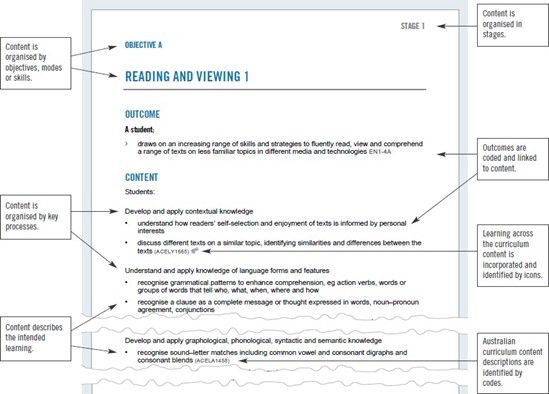Download or print
Request accessible format of this publication.
In NSW, the Act determines the curriculum for all students.
The curriculum is comprised of NESA syllabuses for various key learning areas for primary education (Kindergarten to Year 6), secondary education (Years 7 to 10) and senior secondary education (Years 11 and 12).
The NESA syllabuses identify the essential learning for all NSW students. They are designed to ensure that the curriculum is coherent, challenging and allows for developmental continuity for all NSW children.
Home schooling parents can choose from the syllabus stage statements, outcomes and/or content to prepare the child’s learning program.
Students must study:
Students must study:
Students must also study two subjects, selected by the parent, each from a different key learning area from the following list:
Students must have a pattern of study of courses for senior secondary education selected from the following key learning areas:
NESA syllabuses are based on the following Stages of learning. Parents may select the Stage or Stages for each subject.
Early Stage 1 (Kindergarten)
Stage 1 (Years 1 and 2)
Stage 2 (Years 3 and 4)
Stage 3 (Years 5 and 6)
Stage 4 (Years 7 and 8)
Stage 5 (Years 9 and 10)
Stage 6 (Years 11 and 12)
The syllabuses published on NESA’s website are the most up to date syllabuses at any time. If a syllabus is updated, NESA publishes an Official Notice. To stay in touch with updates, parents can subscribe to NESA News. NESA’s syllabus development process includes stakeholder feedback. When this occurs, information is published on NESA’s website and NESA News.
The NESA syllabuses have many common features in relation to their structure and organisation.
The following describes some of these features and terms used for the Kindergarten to Year 10 syllabuses.
Many of these features also apply to the syllabuses for Years 11 and 12. Other terms are defined in the glossary, (section 16 of the Guidelines).
| Term | Explanation |
|---|---|
| Content | The content describes what students learn about in relation to subject matter or topics. |
| Curriculum | A general term used to refer collectively to the NESA syllabuses for the required key learning areas identified by the Act. |
| Educational program | The parent’s teaching and learning plan and associated records. |
| Objectives | Objectives are broad statements that outline at a high level the intention of a syllabus and summarise the knowledge, understanding, skills, values and attitudes to be developed through study in the subject. They provide direction and act as organisers for the intended outcomes. |
| Outcomes | Outcomes provide a more detailed description of the knowledge, understanding, skills, values and attitudes expected to be acquired by most students by the end of a stage of learning. Each outcome has a short-hand code that parents may choose to use on an optional basis. |
| Stage statements | Stage statements are summaries of the knowledge, understanding, skills, values and attitudes that have been developed by students as a result of achieving the outcomes for each stage of learning in each K- 10 syllabus. There are stage statements for all K-10 syllabuses, with the exception of K-6 Creative Arts, where these summaries are called Foundation Statements. |
| Syllabus | A syllabus is a document that contains information about a specific subject or course. A syllabus describes the learning to be undertaken in relation to key organisational elements, intended learning goals, content, sequence of learning and assessment. |
The following provides a sample page from a Kindergarten to Year 10 (K-10) syllabus identifying and explaining some of the key organising features.

All children may access the syllabus outcomes and content in a range of ways to suit their learning needs. They can do this with or without adjustments, as appropriate.
Adjustments are actions taken to enable a child to access syllabus outcomes and content. The adjustments may relate to teaching methods, learning activities and assessment processes according to the needs of the child.
Some examples of adjustments include sequencing the materials in a different order, using simplified texts, using both oral and visual forms of input, using different mediums including various technologies and/or covering a limited amount of material in any one session and/or providing more or less time. The NESA website provides information about supporting children with disability.
If adjustments do not provide sufficient access for the child to some or all of the syllabus outcomes, a Life Skills course may be appropriate. Life Skills courses provide for children who are unable to access the mainstream syllabus outcomes, particularly children with an intellectual disability. NESA publishes Life Skills courses in Stages 4 to 6 (Years 7 to 12).
Further advice and programming support for children with disability can be found in each syllabus and on the NESA website.
Registration for home schooling requires that the minimum curriculum of the Act is provided. This means that the child’s educational program is based on and taught in accordance with the relevant NESA syllabuses.
Other programs can also be provided as long as the requirements for registration continue to be met. Such programs can be in addition to the curriculum of the Act or they can be incorporated into the curriculum based on NESA syllabuses. For example, if the child is learning music or dance, the learning may be relevant to addressing aspects of the Creative Arts syllabus.
Similarly, parents can integrate informal learning and daily life as opportunities for learning. For example, making shopping lists may address aspects of the English syllabus or measuring ingredients for cooking may address aspects of the Mathematics syllabus.
Request accessible format of this publication.